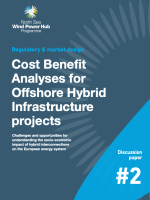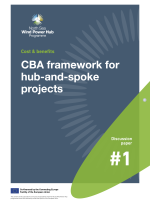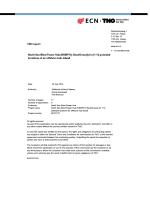Cost Benefit Analyses for Offshore Hybrid Infrastructure projects
One of the main goals of the NSWPH is to assess the societal costs and benefits of the hub-and-spokes concept to support planning and decision-making on a European energy system level. Adequate evaluation of hub-and-spokes concepts compared to relevant alternatives is key for understanding the potential societal benefits of different offshore grid buildouts or hub-and-spokes design options.
In NSWPH’s recent work it has become apparent, that the complexity, size and potential impact of the installation of a hub-and-spokes concept on the surrounding energy system, means that traditional applications of CBA methodologies are not suitable for the prospective hub-and-spokes infrastructure and therefore cannot adequately assess all costs and benefits. A major reason for this is that a traditional CBA often limits the analysis to assess the same overall system with and without a given project and compare the results based on operational changes. Such an approach does not capture the potential high impacts of a hub-and-spokes project on the structure of the overall energy system.
Since investment needs for hub-and-spokes concepts are high, traditional CBA approaches bear the risk of negative evaluation with the potential to favour radial offshore wind deployment and hinder optimal future grid buildout for power and hydrogen.
Important aspects for assessment of hub-and-spokes projects include:
- The large size of a hub-and-spokes system will impact the long-term development of the surrounding energy system and subsequent investments.
- The physical grid layout can significantly impact realisable energy flows (of power and hydrogen), which current applications of CBA methodologies based purely on market setups and large bidding zones, do not capture.
- Calculation of impacts of infrastructure investments on producers, consumers and TSOs deliver important insights for political decision making. The current market setup distinguishing between Day- Ahead markets and subsequent redispatch measures, have implications for individual stakeholders, which are hard to cover without reflecting this process in the modelling setup.




